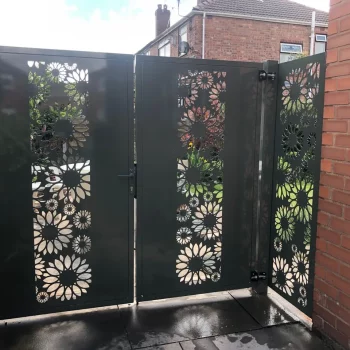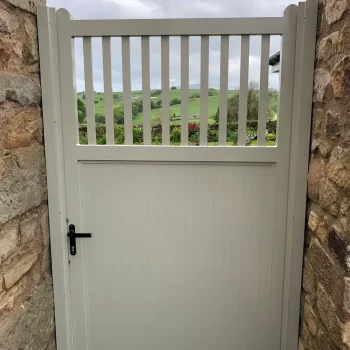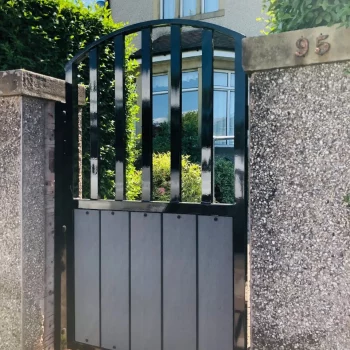Our Finishes & Processes

Powder Coating
The durability of Powder Coating
Powder coating is a quality finish found on many products you come in contact with each day. Powder coating protects most robust machinery as well as many household items you use on a day to day basis.
It provides a durable finish which some liquid paints cant offer, while still giving an attractive finish. Powder coated products are resistant to diminished coating quality as a result of an impact, ultraviolet light, and other extreme weather conditions. So in conclusion, this reduces the risk of chipping, corrosion, abrasions, scratches, fading, and other wear issues.
Driveway/Side Gates
Powder coating is a popular choice, using a dry finishing process which is used on many products. More companies use powder coatings for a high-quality and durable finish.
Used for functional (protective) and decorative finishes, powder coatings are available in an almost limitless range of colours and technological progress have resulted in outstanding performance properties.
How does Powder Coating Work?
Based on polymer resin systems powder coatings combine pigments, flow modifiers, levelling agents, and other additives. These components are mixed and ground into a uniform powder similar to baking flour. (ESD) A process called electrostatic spray deposition is typically used to achieve the application of the powder coating to a metal substrate. This application process uses a spray gun, which applies an electrostatic charge to the powder particles. After application of the powder coating, the products go into a curing oven.
This type of application is the most popular process of applying powders. Powder coatings are also used on non-metallic substrates such as plastics.
Hydro Dipping
What is hydro dipping?
Hydro dipping is known as water transfer printing, immersion printing and hydro imaging, is a process that allows you to implement graphics to almost any three-dimensional object. This technique has been used for years in many industries mainly the auto industry.
Items like alloy wheel, helmets and gaming controllers are some items decorated with hydro films. There are many materials the film can be applied on such as metal, wood, plastic and more.
How durable is HYDRO DIPPING?
Hydro-dipping can be used for much more than sprucing up the appearance of your alloy wheels or motorbike parts. In addition to a bespoke and custom look on your products, hydro-dipping adds protection to your gates and fencing.
This water transfer printing coating makes your objects resistant to scratches, UV rays and corrosion. For example, hydro-dipping a gate will help protect it from daily wear and tear.
Shot Blasting
This process is mainly used to strengthen, clean and polish metal. The most common process is known as air blasting. This involves the use of compressed air and an abrasive medium known as shot. This a very cost-effective technique and is an essential process before applying a powder coating.
A primary advantage is that it extends the longevity of the end product while using ecologically friendly materials. Perhaps most importantly, shot blasting facilitates a bond between the surface and the final coating. It is also beneficial before applying a coat of galvanised metal such as zinc, as stronger levels of adhesion are guaranteed.



